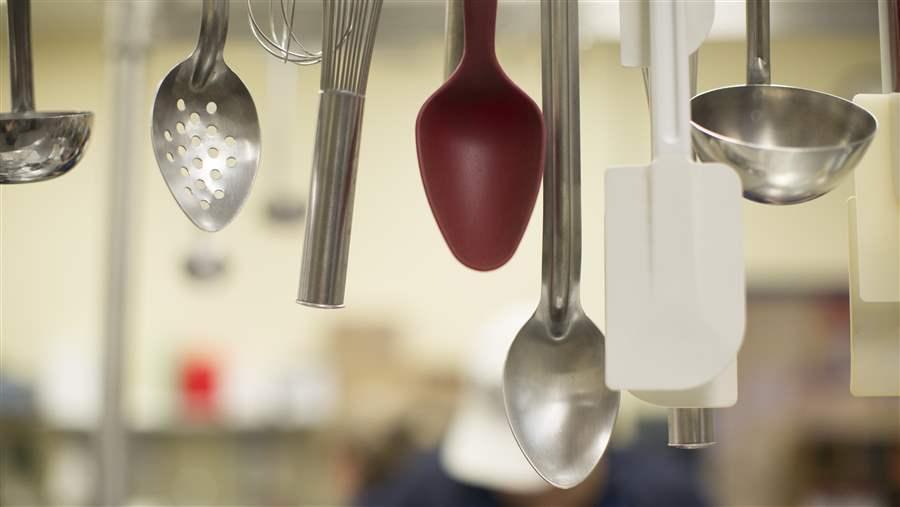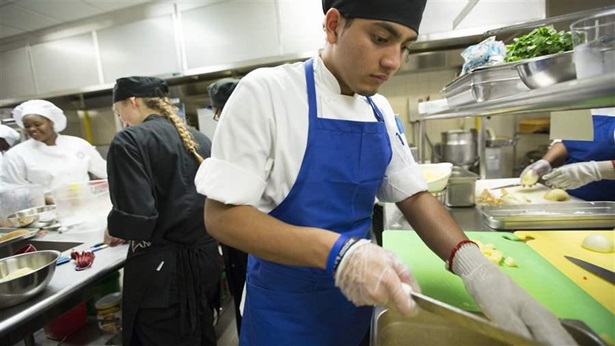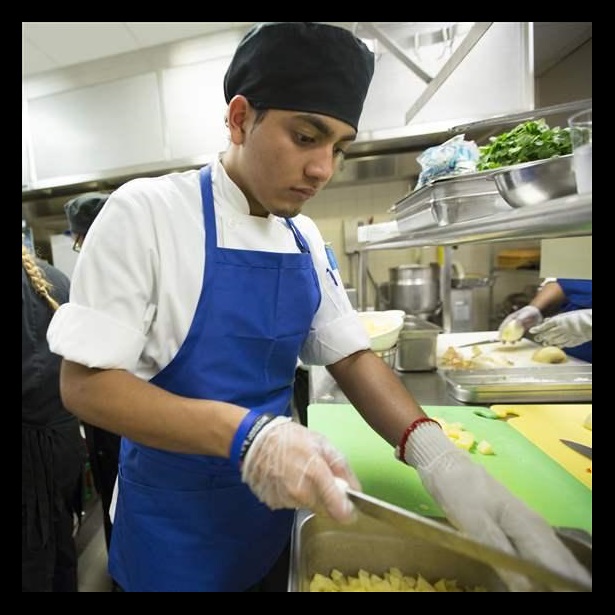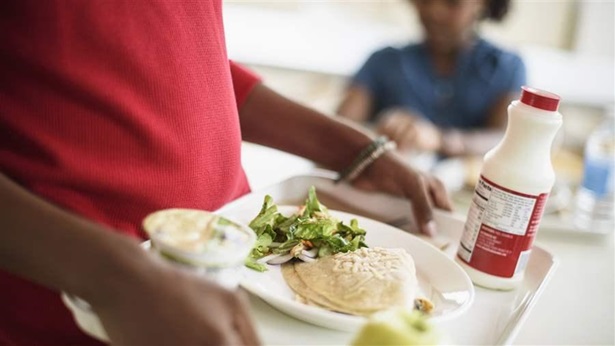School Kitchens Provide Valuable Community Resources When Class Is Out
Equipment and facilities deliver more than healthy student meals and snacks

During off-hours, school kitchens and cafeterias can provide equipment and space for cooking and nutrition workshops, public events, and even small catering businesses.
© The Pew Charitable Trusts
More than 98,000 public school buildings serve neighborhoods across the United States, and frequently their doors are open to community members for civic group events, elections, recreation leagues, and other activities. But one of their most important assets—the kitchens—typically get overlooked when district and community leaders explore opportunities for shared use of school facilities to support local needs.
Fortunately, some trailblazing directors of school meal programs have seized this oft-missed opportunity and partnered with a variety of outside groups to realize benefits for the school and community. New research by the Kids’ Safe and Healthful Foods Project offers guidance on legal, financial, and other issues surrounding public use of school kitchens based on the successes of these early adopters. Their experiences show that investments in school kitchen equipment improve not only student meal programs but also the resources available to support a range of local initiatives.
Growing and cooking for healthier neighborhoods
After-school culinary and nutrition classes are among the most popular public uses of school kitchens. For instance, the national nonprofit Common Threads has partnered with districts in several states to provide hands-on instruction to elementary and middle school children and their parents. By teaching the skills to prepare nutritious, affordable meals, the group aims to help families develop and practice healthy eating at home and throughout their lives. With a similar goal in mind, a collaboration between Lowell Public Schools in Massachusetts and local nonprofit Mill City Grows lets students plant and tend vegetable gardens and then practice safely washing and preparing their harvests in the districts’ kitchens.
Fostering community support and new businesses
Elsewhere, school nutrition directors leverage their kitchens to contribute to the community’s educational and economic opportunities and, in the process, often generate revenue that is invested back in the student meal program. In Indiana, Warrick County School Corp. kitchens support events hosted by parent teacher organizations and other local groups. The Women’s Club of Newburgh, for example, puts on an annual arts and crafts show at a high school and uses the kitchen to make and serve food to guests. Proceeds go to causes such as scholarships for the county’s college-bound graduates.
Community groups are regular users of kitchens in California’s Oakland Unified School District, too, and Jennifer LeBarre, its nutrition services director, plans to expand her outreach to include startup businesses seeking affordable access to commercial cooking equipment. “After 3 p.m., the majority of our kitchens are empty, so it could really work for the needs of the community,” she says. In addition, both districts charge organizations rental fees for use of the facilities, which supplement the student meal program budget.
Funds to modernize kitchens benefit all users
Even as such partnerships become more common nationwide, aging kitchens can hinder the efforts of school nutrition professionals and community users. A 2012 national survey of nutrition directors revealed that 88 percent of districts needed at least one new piece of kitchen equipment to prepare healthy meals, and 55 percent needed infrastructure improvements, such as electrical or plumbing upgrades. But only 42 percent of directors said they had a budget for equipment purchases, and of those, less than half expected their funds to meet all their needs.
Local, state, and federal policymakers can help districts replace faulty appliances and buy modern tools that support healthy and efficient food service. Congress, for example, has sent states more than $200 million for kitchen equipment grants since 2009, and those funds have enabled several thousand schools to acquire commercial ovens, skillets, refrigerators, and other crucial items that are increasing the appeal of their menus and the potential community uses of their facilities.
Policymakers should build on these investments and ensure that school meal programs across the nation have predictable funding sources for equipment and infrastructure upgrades. Helping them maintain and improve their kitchen capabilities would encourage more school-community partnerships around these valuable public resources.
Stephanie Scarmo leads research on school nutrition programs and policies for the Kids’ Safe and Healthful Foods Project.


Neighborhoods Benefit From Access to School Kitchens
Making facilities available to the public promotes health, community engagement


School Meal Programs Innovate to Improve Student Nutrition
Survey explores progress, challenges three years ...
Learn More





